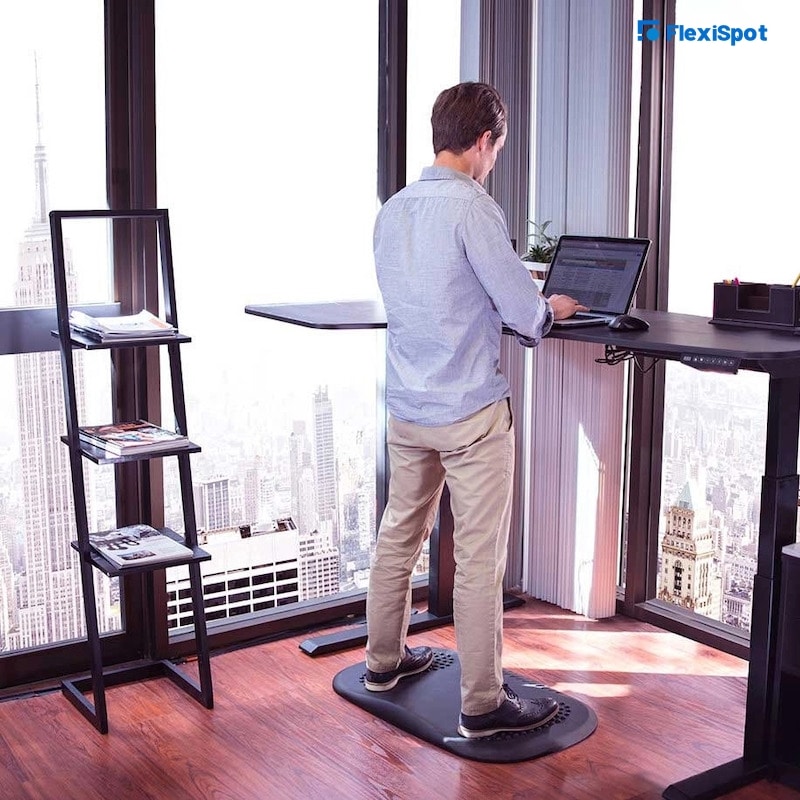If you get pain in your buttocks or legs, it might be sciatica (sciatic nerve pain), but how can you know, and what can you do about it? In this post, we’ll look at some key ways to recognize sciatica and some simple, natural strategies for getting relief, especially for those with office jobs who may be sitting a lot.
What Is Sciatica?
Sciatica is a symptom, not a medical condition, and it consists of pain generated from irritation or pinching of one of the sciatic nerves, the longest nerves in the body. With multiple origin points in the lower spine, they run across the buttocks and down the legs. Their position around so many moving parts makes them prone to getting rubbed the wrong way by a variety of issues in the back and pelvis.
Sciatic nerve pain encompasses a range of symptoms and can have a number of causes. Those underlying issues can include herniated or degenerating discs, spinal stenosis, misalignment in the lumbar spine or sacroiliac joint (at the base of your spine), or tightness in the piriformis muscle, which sits under your glutes.
The pain can show up in different ways and levels of intensity for different people, from occasional and annoying to ongoing and debilitating. Common traits include:
- Continual pain in one side of the buttock or one leg
- Radiating pain down the affected leg, sometimes into the foot and toes
- Weakness or numbness in the leg, foot, or toes
- Sitting can make it worse, as can sneezing or coughing
- Burning, tingling, or searing sensation in the leg
- Sharp pain that may make it difficult to stand up or walk
Many lifestyle habits can cause or exacerbate the problem, such as poor posture, lack of movement for extended periods (e.g. sitting at a desk), stiffness, obesity, and chronic stress. Aging can also play a role through weakening of bones and joints.
How to Sit for Relief From Sciatic Nerve Pain
Although sitting for long periods is generally not a good idea, for sciatica or overall well-being, of course you’re still going to want to sit sometimes. Most experts suggest a few common practices for sitting in a way that reduces sciatic nerve pain.
- Use an ergonomic chair that fits your body, and adjust it to the right height and position. An ergonomic seat cushion and lumbar support can also help turn a normal chair into a cozy haven for your tush.
- If your chair pivots, use it to turn your whole body instead of twisting your spine.
- Take breaks—get up and move every 15-30 minutes.
- Sit up straight, all the way back in your chair so your back and buttocks are supported, rather than sitting towards the front of your chair.
- Sit with both feet flat on the floor, not just your toes. Don’t cross your legs or lean to one side.
- Keep your knees even with your hips, or even slightly elevated. You may need a prop to lift your feet, depending on your size. Interestingly, general posture guidelines (not related to sciatica) often suggest keeping knees slightly lower than hips, so if having your knees up hurts more, try lowering them. Every body is different, and it’s important to find what works best for yours.
Other Ways to Alleviate Sciatica Pain
Many people with sciatica find relief from simple self-care practices. Because it can be a symptom of an issue that needs medical attention, it’s a good idea to consult a physician first. Knowing the root cause will help determine what physical approaches to take, like certain exercises, stretches, or therapies.
Let’s look at a few options:
- Keep moving - according to the work of John Sarno, which has helped thousands of chronic pain sufferers, it’s important to maintain an active lifestyle, doing the things you enjoy, rather than becoming sedentary or bed-ridden out of fear.
- Face your feelings - another of Dr. Sarno’s basic tenets was that most pain is at least partly based in emotions, due to a nervous system mechanism that restricts blood and oxygen to different parts of the body when we’re under stress. Taking a few minutes to breathe quietly and focus your mind on the place in your body where you feel pain can sometimes reveal hidden emotional issues that are trying to get your attention.
- Stretching - Gentle yoga stretches can be great for alleviating sciatica pain. Again, knowing what’s causing the pain in your sciatic nerve can help you determine what specific poses to focus on.
- Massage - a good massage can alleviate not only physical tension around the sciatic nerve, but also increase blood flow and elevate calming, happiness-inducing hormones like dopamine, serotonin, as well as pain-reducing endorphins.
- Chiropractic - misaligned bones and joints can cause or exacerbate sciatica symptoms, and getting these corrected can bring immediate relief. Chiropractors can also typically advise on particular postural exercises or lifestyle adjustments that will put in you in better shape for the long term.
Get Ergonomic for Sciatica Relief
If your chair and desk don’t fit your body or support good posture, making a change can have a huge impact on your health and pain levels. Try a height-adjustable desk or converter so you can switch between sitting and standing. Make sure you have a chair that fits and supports you and/or an ergonomic seat cushion, as well as good shoes and an anti-fatigue mat for standing.
Computer monitor height is also important, but it’s something you’ll have to play with. As with leg position, there is some disagreement here. Many sources recommend having the top of the monitor at eye level, while others say the center of the monitor at eye level. One recommended closing your eyes for a moment, then opening them and noticing where your eyes first naturally focus, and placing the center of the monitor there.
Who’s right? Again, find out for yourself by propping your monitor on books or other objects, or for more precise positioning, use an ergonomic monitor arm.
If you’re in pain, you don’t have to just suffer through it. Find out the causes, both physical (like herniated discs or posture-wrecking work setup) and emotional (such as stress and anxiety). Working with a knowledgeable physician or posture specialist can help shed light on the best approaches to get relief, and finding ways to calm your nerves is always a good idea in our high-pressure society.
Have you experienced sciatica? What have you found most helpful for pain relief?





